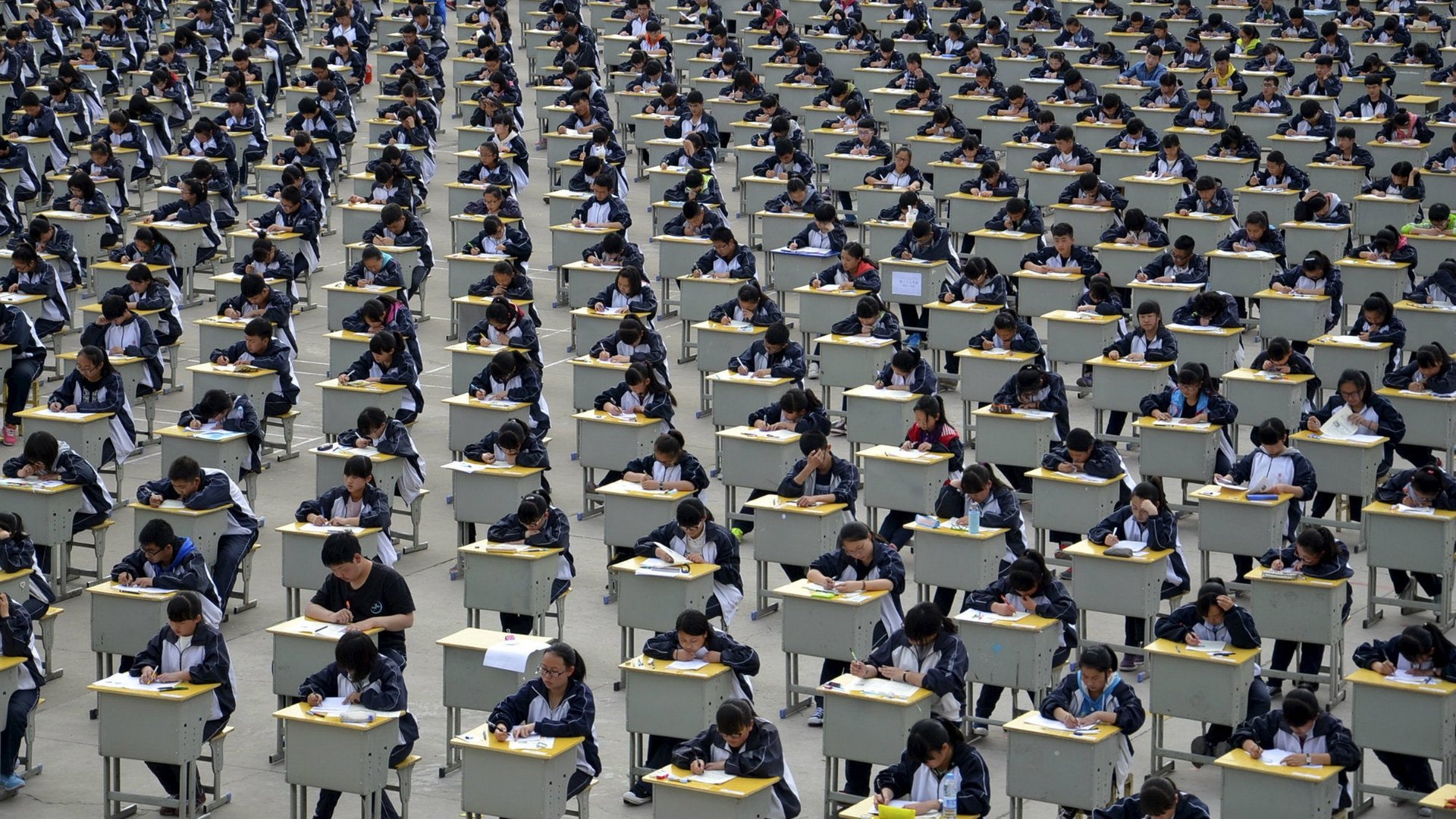China’s education system leaves students woefully unprepared for the real world
Chinese kids are smart. The kids of Shanghai cleaners outperform those of British doctors and lawyers in math, and Shanghai’s richest students are about three academic years ahead of the developed-country average. Students in the 90th percentile in the US score below the average Shanghai student on a test given to 15 year-olds around the world (pdf).


Chinese kids are smart. The kids of Shanghai cleaners outperform those of British doctors and lawyers in math, and Shanghai’s richest students are about three academic years ahead of the developed-country average. Students in the 90th percentile in the US score below the average Shanghai student on a test given to 15 year-olds around the world (pdf).
But tests only tell you so much about Chinese students’ smarts, says Xiaodong Lin, a professor of cognitive studies at Columbia University’s Teachers College. When they come to university in the US, Chinese students tend to struggle with analytical writing, critical thinking, and communication with peers and professors, Lin wrote in the People’s Daily (link in Chinese), the official newspaper of China’s Communist Party.
“While Chinese education has focused more on mastery of knowledge, the American education seems to emphasize how to learn, even though we may not do as a good job as we wish,” she wrote.
Lin has taught college students in the US for 21 years, and told Quartz about she is constantly comparing her US and Chinese students. She has been the faculty adviser for the Chinese Student Association at Teachers College for 10 years, noting that she is “deeply in touch with the community.” She has surveyed other teachers about the differences between American and Chinese students, and writes about her findings frequently.
Global policymakers are equally obsessed with comparative student performance. The OECD gives 15-year-olds around the world a test every three years to track their progress in math, science, and reading; education ministers anxiously await the data and the praise or punishment that follows. But wherever they sit in the rankings, countries struggle to balance increased academic rigor against the reality that the modern workplace demands skills that aren’t reflected in tests.
Andreas Schleicher, head of the OECD’s education unit, told Quartz that the rest of the world can learn from the high standards that Chinese schools set for students, as well as the freedom teachers are given to adapt their methods to the subject matter. “They know how to teach,” he told Quartz. “It’s a science for them.” (Shanghai math teachers come to the UK every year to show off their talents.)
Lin agrees that this rigor is good—her Chinese students are better at deeper thinking than their American counterparts—but fostering independent thinking is also important. When she asked Chinese students why they were so quiet in class, the responses included statements like “my parents told me that I should not speak unless I have correct answers” and “I am afraid of speaking when my ideas are different from the class,” she wrote in the People’s Daily.
Other professors echoed Lin’s concerns. One from Northwestern University told her that that Chinese students work very hard but rarely produce original thoughts or ideas. “What they lack more is the ability to bring up viewpoints and justify them,” Lin wrote.
Lin is critical of US students, too. She says they do not take negative feedback well, and their confidence can be as much of a liability as an asset.
She ran through her impressions on the most notable strengths and weaknesses of American and Chinese students for Quartz:
Relative strengths
Relative weaknesses
If some enlightened country was able to combine the best of both of these worlds, it would have the perfect education system. Oh wait—it’s called Finland.